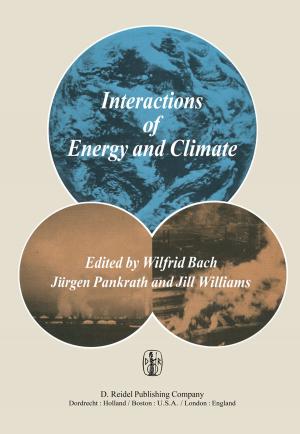Atmospheric Greenhouse Gases: The Hungarian Perspective
Nonfiction, Science & Nature, Science, Earth Sciences, Geology, Biological Sciences, Environmental Science| Author: | ISBN: | 9789048199501 | |
| Publisher: | Springer Netherlands | Publication: | October 29, 2010 |
| Imprint: | Springer | Language: | English |
| Author: | |
| ISBN: | 9789048199501 |
| Publisher: | Springer Netherlands |
| Publication: | October 29, 2010 |
| Imprint: | Springer |
| Language: | English |
Human induced global climate change is the biggest challenge humankind faces today. Increasing amount of atmospheric greenhouse gases play a crucial role in the evolution of the climate. Without the understanding of the contributing processes, feedbacks and interactions we cannot predict the future changes and develop effective mitigation strategies. To decrease the uncertainty of the global studies detailed regional studies are needed surveying the regional characteristics of the atmospheric greenhouse gas budget and the influencing factors. Atmospheric Greenhouse Gases: The Hungarian Perspective covers a coherent subset of the Hungarian climate change oriented research that is directly related to greenhouse gases. Topics discussed in the book range from the monitoring of the concentrations and fluxes of atmospheric greenhouse gases, through the modeling of atmosphere-biosphere interaction and greenhouse gas exchange processes, to the review of the anthropogenic contribution of Hungary to the greenhouse gas budget of the atmosphere. The studies call the attention to the regional properties which may modulate the European scale or global picture on the variation of atmospheric greenhouse gases.
Human induced global climate change is the biggest challenge humankind faces today. Increasing amount of atmospheric greenhouse gases play a crucial role in the evolution of the climate. Without the understanding of the contributing processes, feedbacks and interactions we cannot predict the future changes and develop effective mitigation strategies. To decrease the uncertainty of the global studies detailed regional studies are needed surveying the regional characteristics of the atmospheric greenhouse gas budget and the influencing factors. Atmospheric Greenhouse Gases: The Hungarian Perspective covers a coherent subset of the Hungarian climate change oriented research that is directly related to greenhouse gases. Topics discussed in the book range from the monitoring of the concentrations and fluxes of atmospheric greenhouse gases, through the modeling of atmosphere-biosphere interaction and greenhouse gas exchange processes, to the review of the anthropogenic contribution of Hungary to the greenhouse gas budget of the atmosphere. The studies call the attention to the regional properties which may modulate the European scale or global picture on the variation of atmospheric greenhouse gases.















